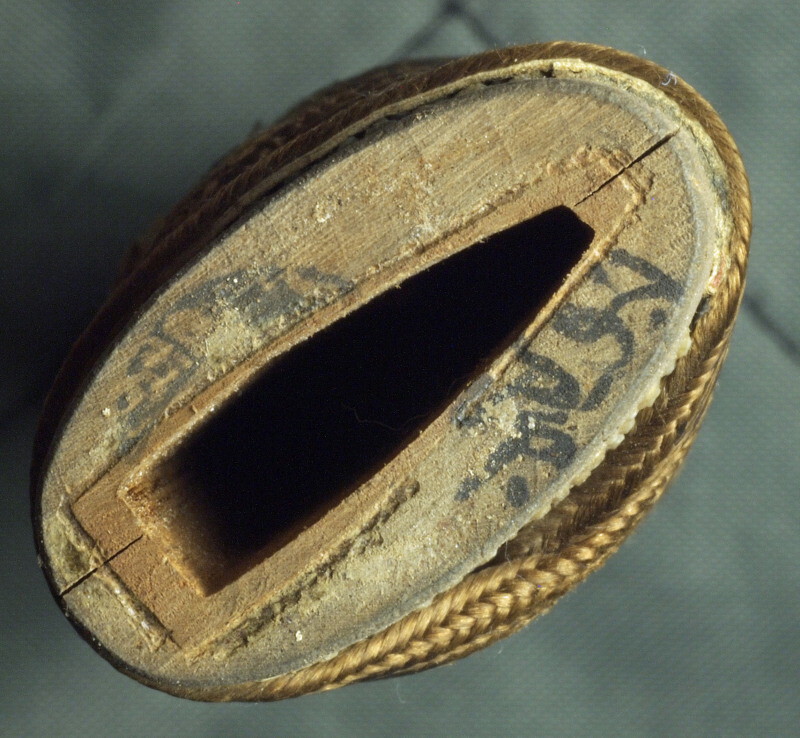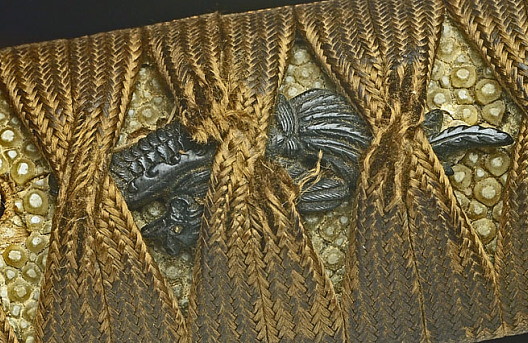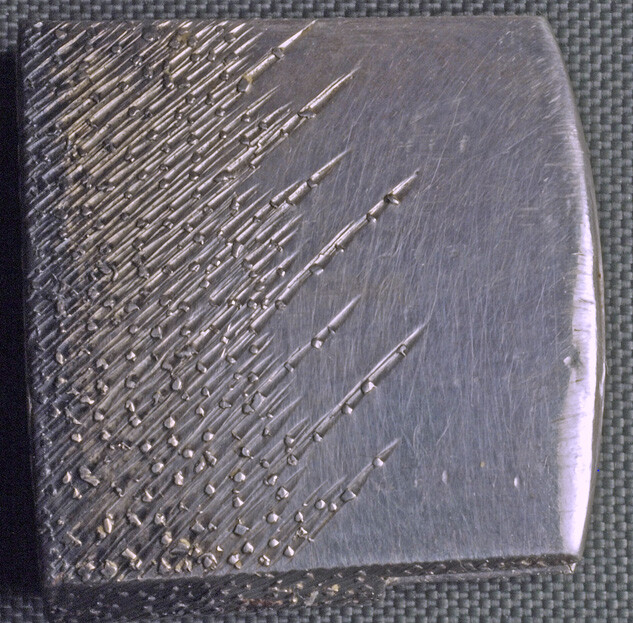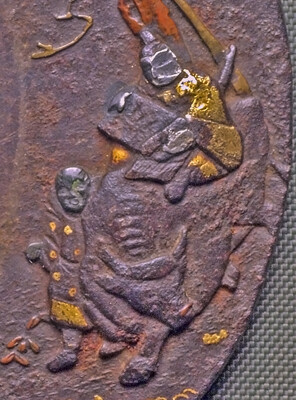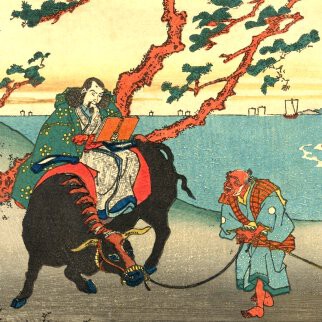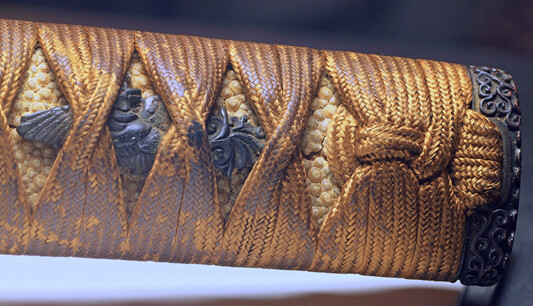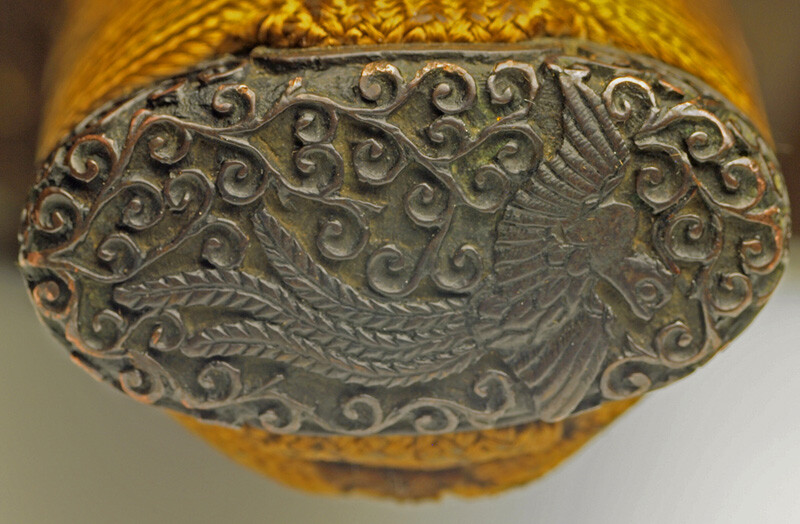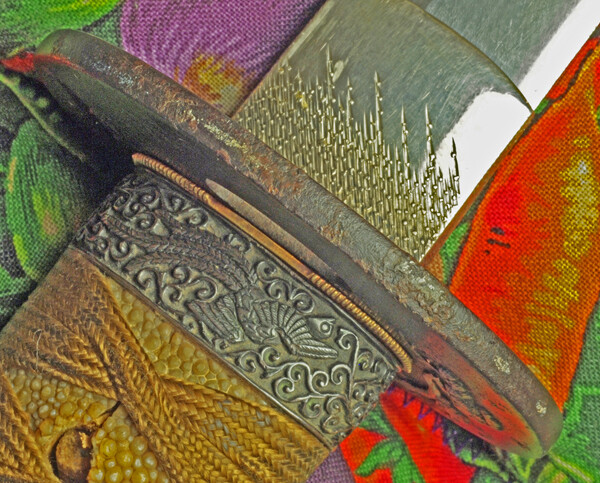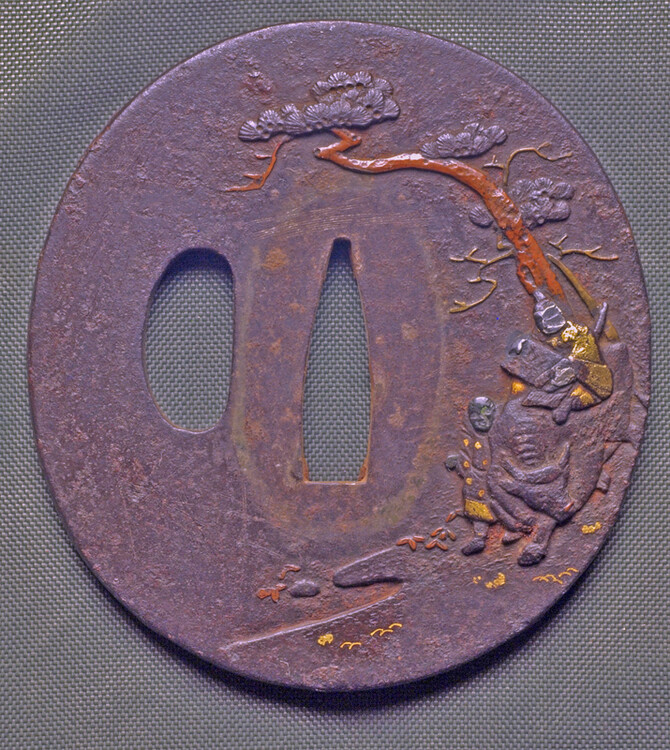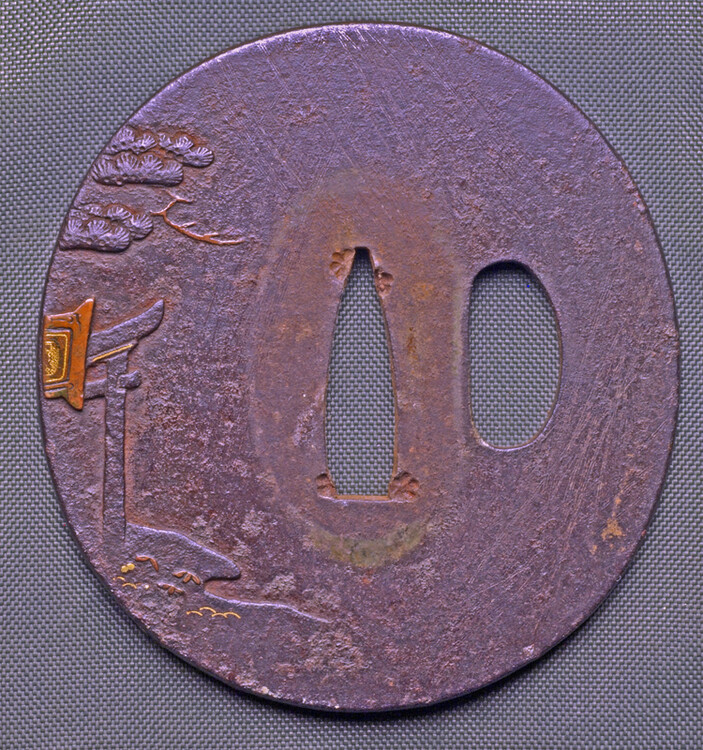-
Posts
33 -
Joined
-
Last visited
Profile Information
-
Location:
Los Angeles
bomulder's Achievements
-
Thanks for that very interesting link, Francois! Very fascinating and totally new insight for me on the art and history of the Japanese sword. Maybe somebody else here can identify the scroll/signature/mei, since the fuchi/menuki/Kashira with a Ho bird (phoenix) has no mei and probably done by somebody else. Again, thanks :D Bo
-
Can anybody here make any sense of the markings I found on the end of the handle fitting under the fuchi? I can't even find the right way up to understand it. Thanks for any thoughts or insights. Bo
-
Thanks Adam. I will tell my dad that the blade is probably nothing special nor quality, but that the handle parts maybe of interest to collectors. I'm having a meeting with a serious collector next week and we'll see what he says after looking at it in person. I don't think it is close to the quality that I think he has. In meantime I have learned much and it is my hope to be able to see some real quality blades in comparison from local collectors and learn more from them. Maybe in the future I will have other opportunities, but for now I'm happy to have had an introduction to Nihonto from this blade. Thanks for the input. Bo
-
OK, leaving it alone. Putting away the box knife While we are on the subject of the tsuka. Does the markings (mei?) on the inside under the fuchi mean anything? Bo
-
I have been wanting to have a better look at the menuki's. The Ito over one of them is worn through and the Same is broken up. Should I sacrifice the Ito and rest of the tsuka to have a look at the menuki's? Not wanting to do any unnecessary harm. Bo
-
Thanks Brian for that insight. I never realized the inter-changeability till just recently. I would really appreciate some opinions if any are worth the cost for a shinsa? Bo
-
per Wikipedia: "Within the passing of Emperor Uda, Michizane's position became increasingly vulnerable. In 901, through the political maneuverings of his rival, Fujiwara no Tokihira, Michizane was demoted from his aristocratic rank of junior second to a minor official post at Dazaifu, in Kyūshū's Chikuzen Province. After his lonely death, plague and drought spread and sons of Emperor Daigo died in succession. The Imperial Palace's Great Audience Hall (shishinden) was struck repeatedly by lightning, and the city experienced weeks of rainstorms and floods. Attributing this to the angry spirit of the exiled Sugawara, the imperial court built a Shinto shrine called Kitano Tenman-gū in Kyoto, and dedicated it to him. They posthumously restored his title and office, and struck from the record any mention of his exile. Even this wasn't enough, and 70 years later Sugawara was deified as Tenjin-sama, or kami of scholarship." Looking closely at the details on the habaki you can see the depiction of rain, hail, lightning? Wikipedia's information on Dazaifu where Sugawara was exiled to; "In the Heian period, Dazaifu was a place of exile for high-ranking courtiers. Nobles exiled there include Sugawara no Michizane, who was later deified, and upon whose grave the Dazaifu Tenman-gū shrine stands." This exile to the south of Japan kinda fits with the use of the Ho bird on the fuchi and kashira, which astologically can stand for south and have Phoenix symbolism as well by the re-instating deification. Maybe I'm just trying to hard to make my case. What you guys think? Bo
-
Some close ups of the areas of very interesting (at least to me) details. I'm very puzzled by the detail in the Torii (temple gate). Why only depict half of it? What is it? A gold vase? Chinese character? I'm open to any other suggestions. As in my earlier post, I'm thinking the person on the ox is Sugawara no Michizane (菅原 道真?, August 1, 845 – March 26, 903). Looking at the print that Wikipedia uses for him you see similarities in head-dress etc. http://en.wikipedia.org/wiki/Sugawara_no_Michizane It has been documented that he liked to ride an ox when in exile and the ox stopped unmovable at reaching current temple grounds when Sugawara died. http://www.printsofjapan.com/Index_Glos ... _Tombo.htm A print from this site credited to Sadahide has some similarities to the scene on the tsuba, with holding books while riding ox that is being led by servant among pine tree. Any thoughts be much appreciated. Bo
-
Thank you Andrey! Now we need to see if the use of the "Red Bird" has any symbolic connection to the Tsuba. I have been looking at the tsubas on your website with wonder and deep appreciation. Some appear in a similar style but I'm having difficulty in placing period and school for mine as I posted in my first post. I'm having difficulty in finding other examples that use as much color and fine detail (as the temple gate sign, colored red pine branches, red ox's nose, etc.) while the surface seems to have been left so rough (filing marks under satas, this is not from rolling in the back of the car for 25+ years) Seems like the more I learn, the less I know or understand...LOL. Bo
-
Does anybody here know anything about the bird that is on the fuchi and kashira? What kind of bird are we looking at? What is it's signifigance in Japanese culture. To my uneducated eyes it looks like the paradise birds you find in Indo-Pacific Papua Guinea, but those are so far from Japan. Curious minds would like to know . Bo
-

Poll:- New collectors and ages of Nihonto enthusiasts
bomulder replied to Brian's topic in General Nihonto Related Discussion
Thank you Veli, for your appreciation of my story on the wakizashi. I thought we were all looking for omniscient Kami and I thought I had found him by discovering him on my tsuba.....LOL! (see my post: Mumei Sho tsuba viewtopic.php?f=2&t=10574) I would love to show off the real thing to people in r/t that could appreciate such, but have not been successful so far as I'm trying though my friend. Thank you for responding. It is better to hear the truth than hear nothing and have wrong assumptions go rampant. Bo -

Poll:- New collectors and ages of Nihonto enthusiasts
bomulder replied to Brian's topic in General Nihonto Related Discussion
I'll be 57 this month. Brand new to Nihonto and purely by accident. We had to borrow my future father-in-law's car since our car was in extended service. Before returning his car we decided to clean it thoroughly, since we belief to return borrowed things better than when you got them. In organizing the clutter of golf equipment in the trunk we discovered a Japanese "dagger" stuck in the back against the backseat. It looked old and authentic. We asked dad what the reason for the blade in the back of the trunk was for. He said he had totally forgotten about it, but it was from his late brother. His brother had Army tour in Japan right after the end of WWII. When he came back he had his foot locker stored at Dad's garage, where it remained for over 30 years till the house was sold. Upon clearing out the footlocker Dad found this shoto and threw it into the back of the trunk. Each time he bought a new car the shoto was thrown in the back of the trunk till we found it few weeks ago. We (me and my fiancee) are both enthusiasts of old Japanese samurai culture ever since the Tom Cruise movie. I asked dad if he would allow us to get the blade looked at by an expert for evaluation and possible appraisal. He agreed and expressed willingness to sell it and split profit if it turned out to be of value over $200 or more. If found to be junk or fake he would rather keep it as a memory to his brother. We have a local friend that is a Japanese sword-fighting instructor. We showed it to him and he recommended it to be evaluated by his friend who is a well-respected sword dealer and expert in blade identification. We took pictures and send them to the expert in hopes to get more information and a meeting in person. My friend asked that we wait for his friend's opinion before talking to others. Weeks passed and we were never able to show the blade to my friend's friend. Being an serious amateur photographer I started taking detailed pictures of the shoto. Looking at the close-ups I noticed details I had not noticed before and got real appreciation for the craftsmanship in making this shoto. Wanting to find out the Japanese inscription on the short utility knife blade (Kozuka with mei), I posted a picture on FaceBook. With help from my friend who knows some Japanese I got a rough translation. Meantime, I also started on-line research and hit on this Nihonto Message Board. I posted asking for help on the mei on the kozuka while waiting to get help on the blade from the local expert referred to. The help on the mei was fantastic and extremely helpful. It really encouraged me to find more information and learn the finer details I never knew about. I learned that the handle part was most likely made by others than the swordsmith and that the study of those parts was a whole other part of appreciation of art and craftsmanship. The tsuba became more interesting when I took a better picture and more details became apparent. The study of the tsuba scene became a fascinating research on available information . I have posted the tsuba here with my interpetation, but have run into no comments so far, although it is being viewed by many. I have also now posted pictures of the complete wakizashi and all it's parts, but not gotten any responses other than a from Chris B. on the blade identification. Thank you Chris :D . I'm not sure how to interpret the lack of responses. If I violated any expected protocols then please educate me. I'm not a collector (yet), but a huge fan of the art of Nihonto. The wakizashi we found in the back of the trunk has been great instrument for an education I would never had if not found. I now have much more appreciation in the preservation of the authentic Japanese swords and realize the importance in the proper preservation of these pieces of art. Hopefully, my getting to know this wakizashi has extended it's life with future collector(s) and provided further education of the Nihonto arts to others. I'm just a passing entity in this piece of history. Bo



